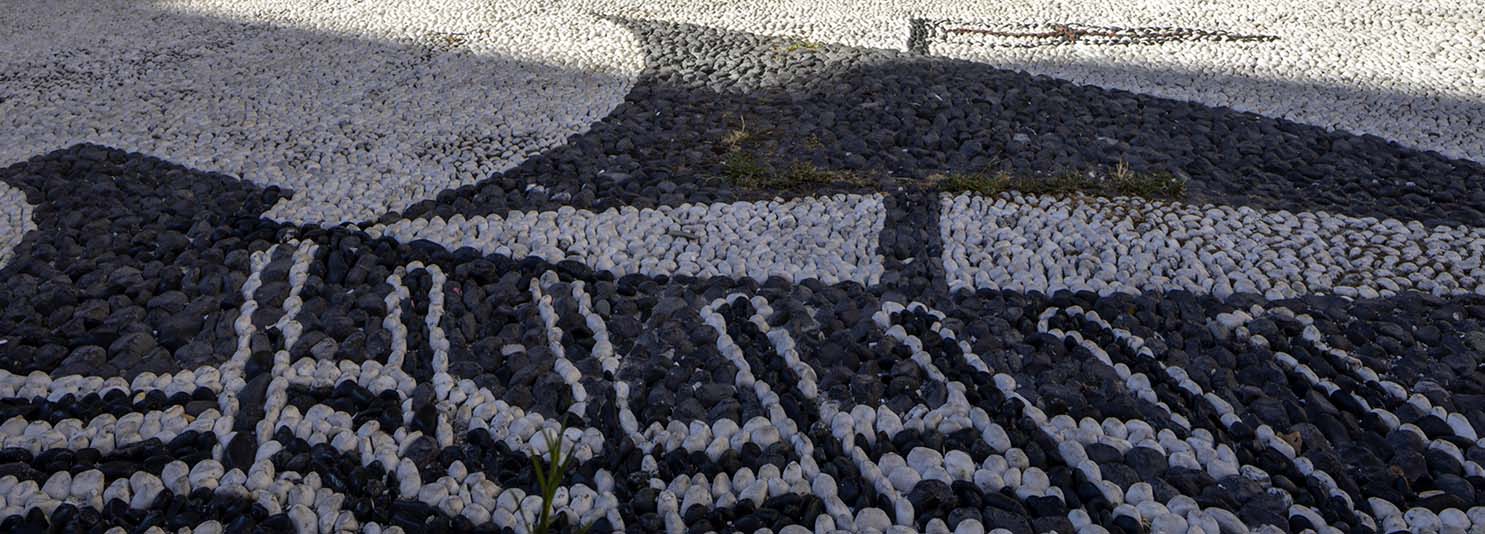Stone upon stone, the Liguria of the rissêu

Rissêu is a Genoese term used to identify the typical cobbled mosaic in churchyards and is an important part of the urban landscape and the history of Liguria itself.
The art of stone mosaic is completely Ligurian and the great poet Virgil already mentioned the cobblestone streets of Liguria. Today, as a thousand years ago, it is man’s job to gather the most suitable stones and pave squares, churchyards, streets. Rissêu is a technique that crosses over into the art of decorating with stones gathered on beaches, in quarries, along the banks of streams, and that has been synonymous with the creative technique and tenacity of Ligurian craftsmen since the 17th century.
To give an idea of the painstaking work involved in the laying, it is enough to know that the covering of a small churchyard requires around three million pebbles.
Some attribute the tradition of decorating churchyards with polychrome cobblestones to the ancient custom of sprinkling the streets with flower petals during the Corpus Domini procession, as if to make this gesture of devotion remembered throughout the year.
Not only churchyards, but also the paths of Genoese aristocratic villas and the foyers of ancient palaces are adorned with precious colourful rissêu, as well as the caruggi and small squares of many historic centres.
For attentive and curious tourists, only in Liguria one can follow this fascinating itinerary almost all in black and white – because with a few exceptions (the red pebbles of Levanto and the green ones of Promontorio) the colours of the rissêu are the two opposite colours.
In Genoa, the most famous mosaics are those of the sanctuary of Nostra Signora del Monte and the Palazzo Reale. But, still in the capital, one cannot forget the newly restored rissêu of Campo Pisano and the garden of Palazzo Montini in Albaro and that of Villa Salvarani in Sampierdarena.
In the west, the mosaic in the parish church of Albissola Marina and the one in Piazza Sant’Ambrogio in Varazze are worth seeing.
While inland, the churchyard of the sanctuary of Tre Fontane in Montoggio, the square in Crocefieschi, the square in San Martino in Calvari and the squares in Lorsica stand out.
In the east, there are numerous works of art in rissêu: the church of Santa Maria in Bogliasco, the Rosa dei Venti in Riva Trigoso, the churchyard of the basilica in Camogli, the square of Villa Durazzo and the church of Santa Margherita D’Antiochia in Santa Margherita, the church of San Giorgio in Portofino, the mosaic of Santa Margherita di Fossa Lupara in Sestri Levante and the Franciscan Friars’ convent in Levanto. The stone mosaics of San Pietro in Zoagli and Santa Croce in Moneglia are marvellous.



